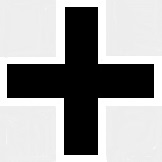Corgi AA38904 German Fokker D VII Fighter - Rudolf Stark, Jasta 35b, Summer 1918 (1:48 Scale)
"When you march into France, let the last man on the right brush the Channel with his sleeve."
- General Alfred von Schlieffen, referring to the Schlieffen Plan just prior to his death in 1913
 The Fokker D.VII was a German World War I fighter aircraft designed by Reinhold Platz of the Fokker-Flugzeugwerke. Germany produced around 1,700 D.VII aircraft in the summer and autumn of 1918. In service, the D.VII quickly proved itself superior to existing Allied fighters, leading to a second "Fokker Scourge." The Armistice ending the war specifically required Germany to surrender all D.VIIs to the Allies at the conclusion of hostilities; nevertheless, the aircraft saw continued widespread service with many other countries in the years after World War I.
The Fokker D.VII was a German World War I fighter aircraft designed by Reinhold Platz of the Fokker-Flugzeugwerke. Germany produced around 1,700 D.VII aircraft in the summer and autumn of 1918. In service, the D.VII quickly proved itself superior to existing Allied fighters, leading to a second "Fokker Scourge." The Armistice ending the war specifically required Germany to surrender all D.VIIs to the Allies at the conclusion of hostilities; nevertheless, the aircraft saw continued widespread service with many other countries in the years after World War I.
Fokker's chief designer, Reinhold Platz, had been working on a series of experimental planes, the V-series, since 1916. These planes were characterized by the use of cantilever wings, first developed during Fokker's government-mandated collaboration with Hugo Junkers. Junkers had originated the idea in 1915 with the first all-metal aircraft, the Junkers J 1, nicknamed Blechesel ("Sheet Metal Donkey" or "Tin Donkey"). The resulting thick-sectioned cantilever wing gave greater lift and more docile stalling behavior than conventional thin wings.
Late in 1917, Fokker built the experimental V.11 biplane, fitted with the standard Mercedes D.IIIa engine. In January 1918, Idflieg held a fighter competition at Adlershof. For the first time, frontline pilots would directly participate in the evaluation and selection of new fighters. Fokker submitted the V.11 along with several other prototypes. Manfred von Richthofen flew the V.11 and found it tricky, unpleasant, and directionally unstable in a dive. In response to these complaints, Fokker's chief designer and engineer, Reinhold Platz, lengthened the rear fuselage by one structural bay, and added a triangular fixed vertical fin in front of the rudder. Upon flying the modified V.11, Richthofen praised it as the best aircraft of the competition. It offered excellent performance from the outdated Mercedes engine, yet it was safe and easy to fly. Richthofen's recommendation virtually decided the competition, but he was not alone in recommending it. Fokker immediately received a provisional order for 400 production aircraft, which were designated D.VII by Idflieg.
Fokker's factory was not up to the task of supplying the entire air force, so their rivals at Albatros and AEG were directed to build the D.VII under license, though AEG did not ultimately produce any aircraft. Because Fokker did not use production plans for their designs, they simply sent a completed D.VII airframe for Albatros to copy. Albatros paid Fokker a five percent royalty for every D.VII built under license. Albatros Flugzeugwerke and its subsidiary, Ostdeutsche Albatros Werke (OAW), built the D.VII at factories in Johannisthal (designated Fokker D.VII (Alb)) and Schneidemahl (Fokker D.VII (OAW)), respectively. Some parts were not interchangeable between aircraft produced at different factories, even between Albatros and OAW.
Albatros soon surpassed Fokker in the quantity and quality of aircraft produced. Despite the massive production program, under 2,000 D.VII aircraft were delivered from all three plants, with the most commonly quoted figure being 1,700.
The Austro-Hungarian company MAG (Ungarische Allgemeine Maschinenfabrik AG - Hungarian General Machine Company) commenced license production of the D.VII powered by Austro-Daimler engines late in 1918, production continuing after the end of the war, with as many as 50 aircraft completed.
Pictured here is a 1:48 scale replica of a German Fokker D VII fighter that was piloted by Rudolf Stark, who was attached to Jasta 35b during the summer of 1918.
Sold Out!
Dimensions:
Length: 6-inches
Wingspan: 7-1/2-inches
Release Date: January 2011
Historical Account: "Bavarian Pretzels" - A native of Bavaria, Leutnant Rudolf Stark began his military career in the cavalry serving with the Bavarian Uhlan Regiment and winning the Bavarian Military Medal order in 1915 and the Second Class Iron Cross in 1916. He then transferred to aviation and in November 1917 took up his first posting with reconnaissance unit FAA296. Following a request to fly fighter aircraft Stark trained at Jastaschule II before joining Jasta 34b in January 1918.
In May 1918, Stark was promoted to acting Commander of Jasta 77 and was already an ace with five confirmed victories. In June, he took command of Jasta 35b adding further victories before being wounded in action in September. Despite this, Stark continued to fly combat sorties and claimed his final victory just two days before the armistice.
The aircraft flown by Leutnant Stark were distinctive by their lilac colored engine cowling and fuselage band as depicted by this Fokker DVII and he finished the war with eleven confirmed victories and five unconfirmed.


